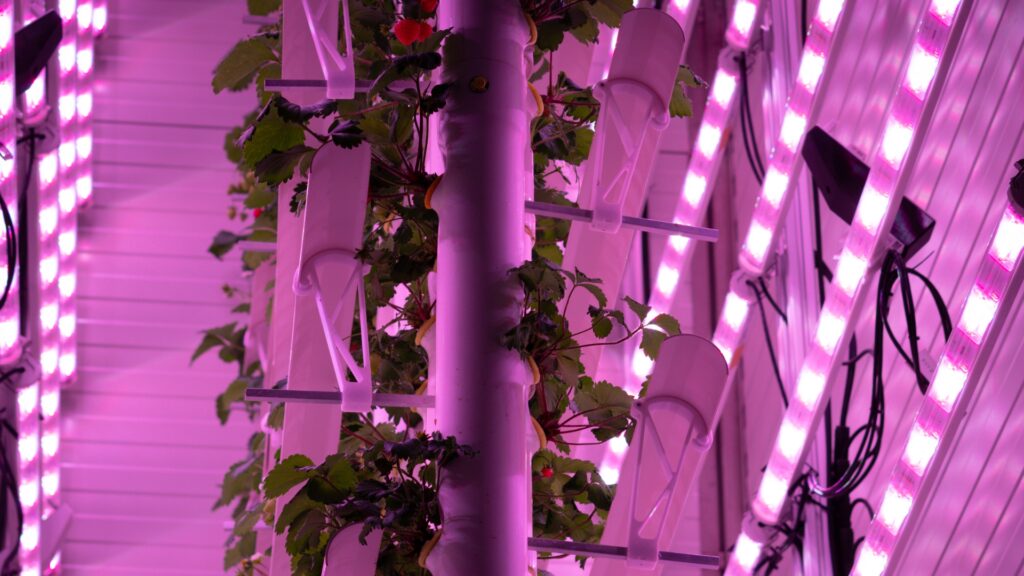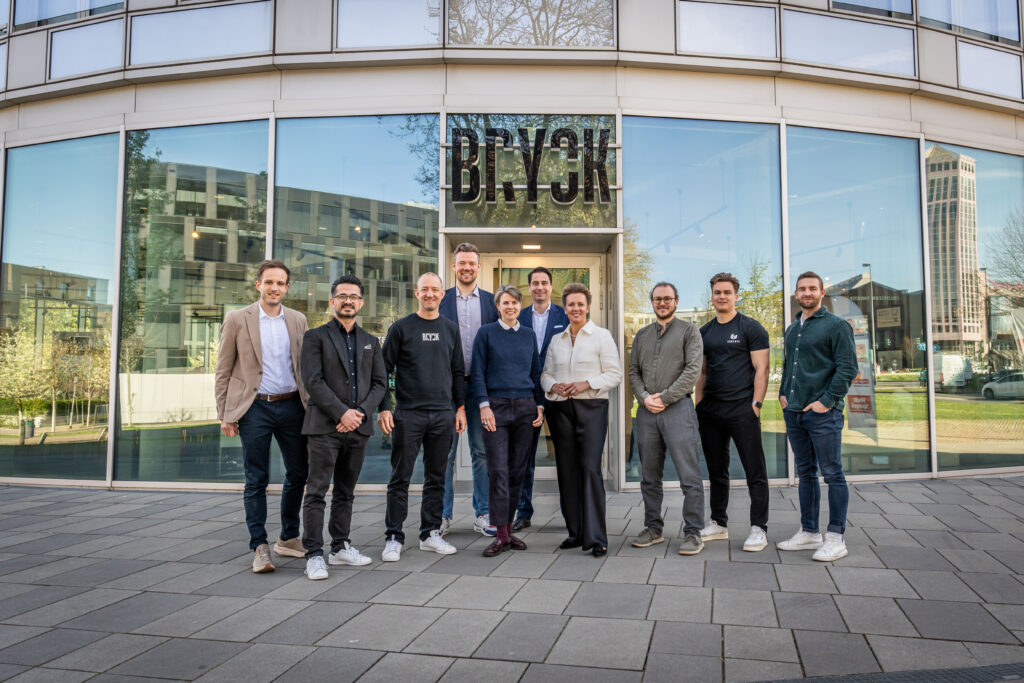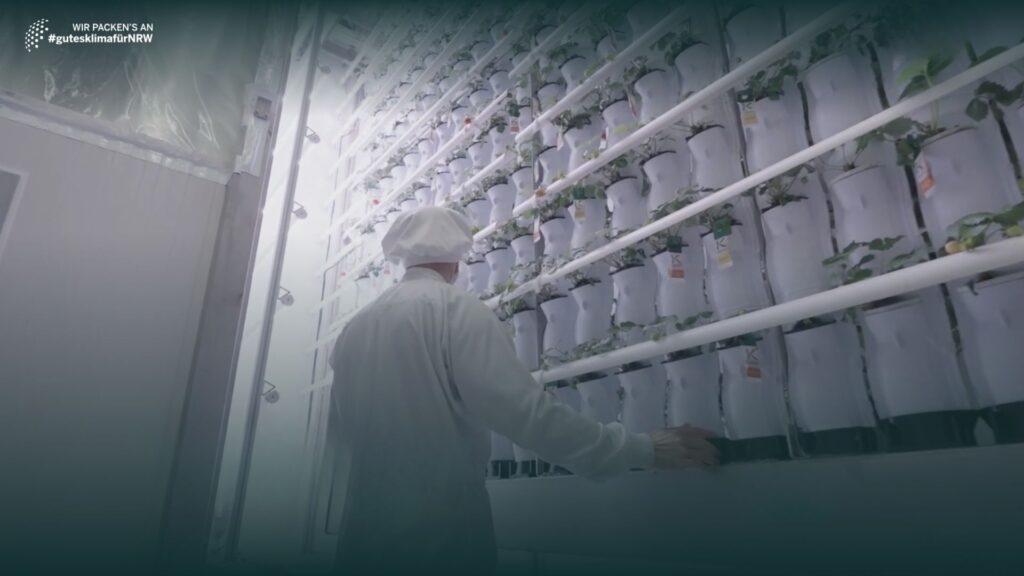Agriculture as we know it is facing serious challenges these days. Key problems are the negative effects of climate change on traditional farming methods as well as the rapid population growth. If we continue with our current food system regardless, we will not be able to feed the world by 2050.
The need for innovative and sustainable approaches to food production has never been more urgent.
Modern agriculture, with its advanced technologies and practices, offers solutions that can help address these critical challenges. Among these innovations, vertical farming stands out as a groundbreaking method with the potential to transform the way we produce food.
This article explores the current state of traditional and modern agriculture, the pressing issues facing traditional farming, and the role of vertical farming in creating a more sustainable future.
Table of contents:
- What Is Modern Agriculture?
- Why Do We Need Modern Agriculture?
- 5 Modern Farming Systems Explained
- Vertical Farming: What the Modern Agricultural System Can Achieve
- Challenges of Vertical Farming
- Conclusion
What Is Modern Agriculture?
Modern agriculture refers to the use of innovative technologies, scientific knowledge, and sustainable farming methods to optimize the production of agricultural goods. The focus lies on increasing efficiency and improving resource utilization and sustainability. In other words, modern agriculture addresses the food crisis in the light of climate change.
Why Do We Need Modern Agriculture?
For decades, there has been extensive research into modern agricultural methods – an overview of various of these new agricultural technologies will be provided later in this article. However, before we get into that, it is important to understand why the development of new farming techniques has become essential.
What are the challenges with traditional agriculture that make these innovations necessary?
The Current Food System Will Not Be Able to Feed Us by 2050
According to United Nations estimates, around 8.16 billion people are living on Earth in 2024. The population is growing rapidly, for comparison: in 1950, only 2.5 billion people were living on Earth. However, our food systems and dietary habits have not kept pace with this trend. By 2050, about 10 billion people will inhabit the planet, and with our current food production methods, we will no longer be able to feed everyone by then.
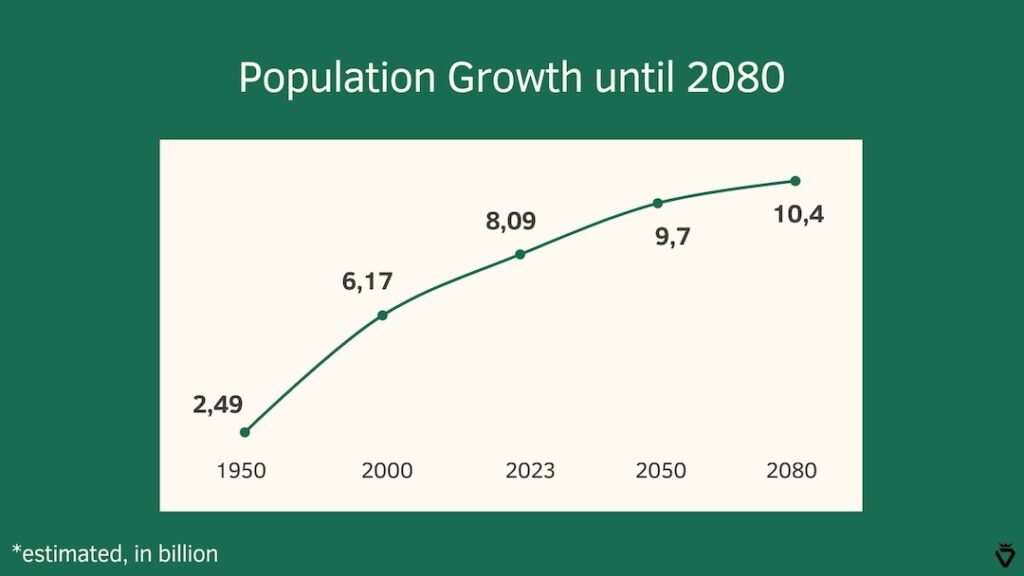
This is a critical issue, and we are only 26 years away from facing it. It is estimated that food production will need to nearly double by 2050 to feed the world’s population. Moreover, sustainable food production for this amount of people will need to:
- Avoid using additional land,
- Protect existing biodiversity,
- Reduce water consumption,
- Reduce nitrogen and phosphorus pollution,
- Produce no carbon dioxide emissions, and
- Not further increase methane and nitrous oxide emissions.
Achieving all this seems impossible.
Even now – with just under 2 billion fewer people – food production is the largest human-made pressure on the planet, threatening local ecosystems and the stability of the Earth’s systems. In 2015, food production was responsible for 34% of global greenhouse gas emissions. Food production thus contributes to more than a third of the emissions that drive climate change, which in turn brings further negative impacts on food production – a vicious cycle that is bound to end in an extreme disaster in just a few years.
The Earth Needs a “Great Food Transformation”
All of this leads to the conclusion that a so-called “Great Food Transformation” is urgently needed – a term coined by the EAT-Lancet Commission in 2019. The way we currently produce our food will not be able to feed the world’s population by 2050. A healthy diet based on sustainable food systems must be achieved for everyone.
This requires significant changes in our eating habits, which includes reducing the quantity of red meat and sugar and increasing the consumption of fruit and vegetables, a drastic reduction in food loss and waste, and major improvements in food production methods. This is where modern, sustainable farming techniques like indoor vertical farming come into play.
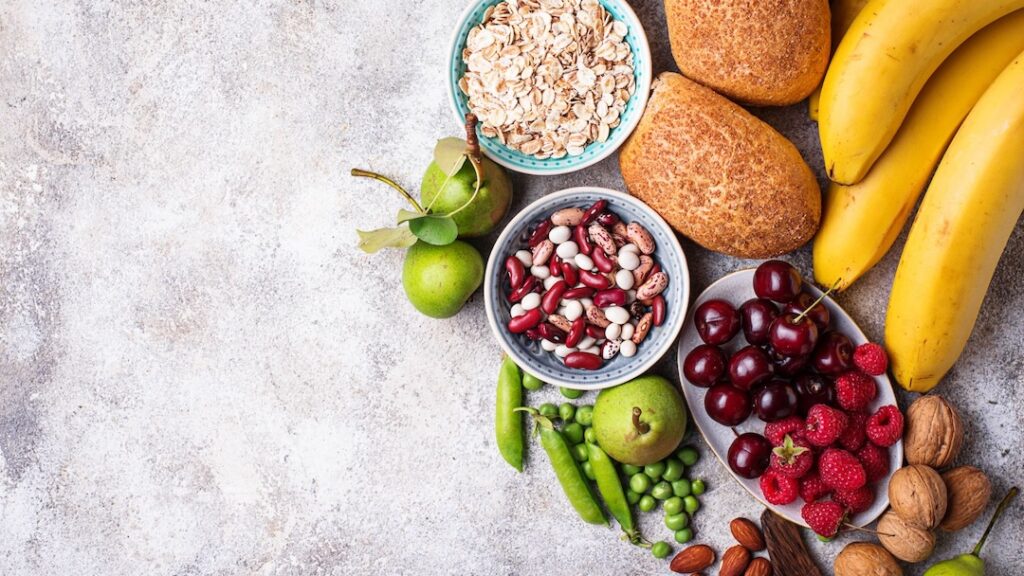
Acute Problems of Traditional Agriculture
In addition to these major challenges, traditional agriculture faces many smaller but pressing problems that modern agricultural technologies must and can solve. Many of these are rooted in climate change, which itself is significantly driven by food production.
Some of these challenges include:
- Dependence on weather,
- Land use and scarcity,
- Transportation and greenhouse gas emissions,
- Soil quality and soil erosion,
- Water scarcity, and
- Loss of biodiversity.
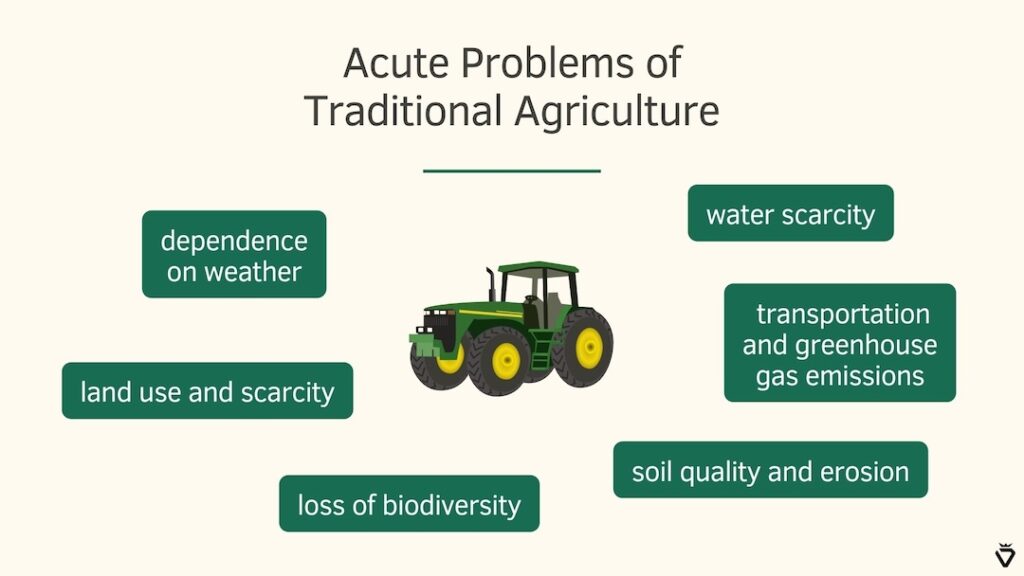
Dependence on Weather
Traditional agriculture is heavily dependent on weather conditions, making it vulnerable to extreme weather events like heatwaves, floods, or storms. Climate change is causing such events to become more frequent, severely impacting agricultural production. Unpredictable weather patterns and rising temperatures negatively affect plant growth cycles and crop yields. As a result, farmers are increasingly struggling to achieve stable and predictable harvests.
At the same time, climate change, with rising temperatures, drier summers, warmer winters, and altered seasonal weather patterns, is changing the vegetation periods of many crops. This also affects the spectrum of plant pests. While some of these changes may offer advantages, they are more likely to bring significant disadvantages.
Land Use and Scarcity
Traditional farming requires vast amounts of land to produce enough food for the growing global population – in Germany, for example, 50.4 % of the total land area was used for agriculture in 2022. However, due to rapid population growth, the available land for agriculture is shrinking. This is especially true in densely populated areas where land is scarce and expensive. Deforestation to create new agricultural land leads to environmental destruction and a decline in biodiversity.
Transportation and Greenhouse Gas Emissions
A large portion of food is transported over long distances before it reaches consumers, contributing significantly to greenhouse gas emissions in addition to those produced during farming itself. In 2022, for instance, Germany imported approximately 6.2 million tons of fruit and nearly 4.9 million tons of vegetables. Many products are transported up to thousands of kilometers.
Soil Quality and Soil Erosion
Intensive soil use in traditional agriculture often leads to soil degradation, meaning a decline in the ecosystem services that soil provides, sometimes to the point of total loss. In short: Soil health is deteriorating. Overuse of fertilizers, monoculture farming, and improper land management result in the loss of nutrients and organic matter in the soil. This makes the soil less fertile and more susceptible to soil erosion and desertification.
Water Scarcity
The agricultural sector is the largest consumer of water worldwide: around 70% of available freshwater is used for farming. In many regions, climate change is causing declining rainfall and increasing water shortages. Even in Germany, water scarcity is already an issue, although it is not yet felt by the average consumer.
Loss of Biodiversity
The expansion of agricultural land and the use of monocultures contribute significantly to the loss of biodiversity. Natural habitats are destroyed to make way for crops, endangering animal and plant species. The decline in biodiversity also weakens ecosystems, which are crucial for pollination-dependent plants and other essential agricultural functions. As biodiversity decreases, ecosystems become less resilient and more vulnerable to diseases and pests.
Traditional agriculture thus faces many major and minor problems. While not all of these can be solved by modern farming methods, they are a crucial part of the transformation needed to secure the future of agriculture.
5 Modern Farming Systems Explained
Modern agriculture has introduced numerous approaches and agricultural technologies that advance traditional food production to address or at least improve upon the problems outlined above. It is important to note, however, that modern farming methods should always be seen as a complement to traditional ones, not a replacement.
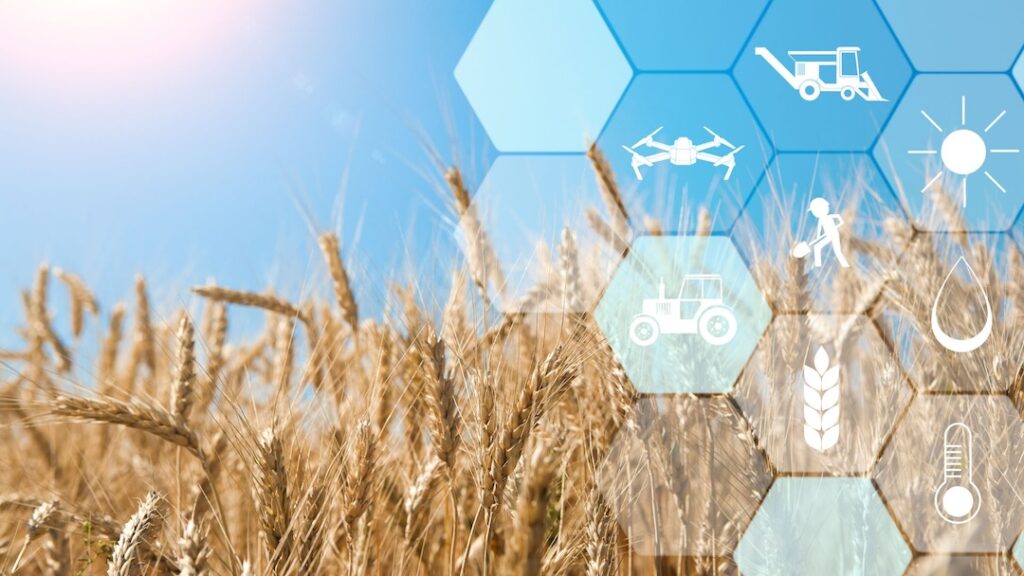
Some examples of modern agricultural methods include:
- Precision agriculture, which uses GPS-guided tractors and harvesters to cultivate fields with centimeter accuracy. This optimizes the use of seeds, fertilizers, and pesticides, leading to higher crop yields and reducing unnecessary input costs.
- Digital crop planning, where farmers use software and big data analysis to optimize crop rotation and more accurately predict crop yields. This enables better decision-making, leading to more efficient land use and increased profitability.
- Automated irrigation systems that measure soil moisture via sensors and adjust water use accordingly, reducing water consumption and improving resource-efficiency. This helps conserve water, lowers irrigation costs, and prevents overwatering, leading to healthier crops.
- Drones equipped with multispectral cameras monitor crop health, enabling early detection of pests or nutrient deficiencies. This allows for quicker interventions, reducing the need for widespread pesticide use and minimizing crop losses.
- Vertical farming, as practiced by companies like vGreens, offers a resource-efficient and sustainable method for growing fruits and vegetables indoors. This method maximizes space usage, reduces the environmental footprint, and ensures year-round production.
Vertical farming is currently being intensively researched due to its great potential. While other modern farming technologies improve traditional practices, they cannot circumvent the external factors of climate change. Vertical farming, however, can and is therefore considered one of the most promising additions to traditional farming.
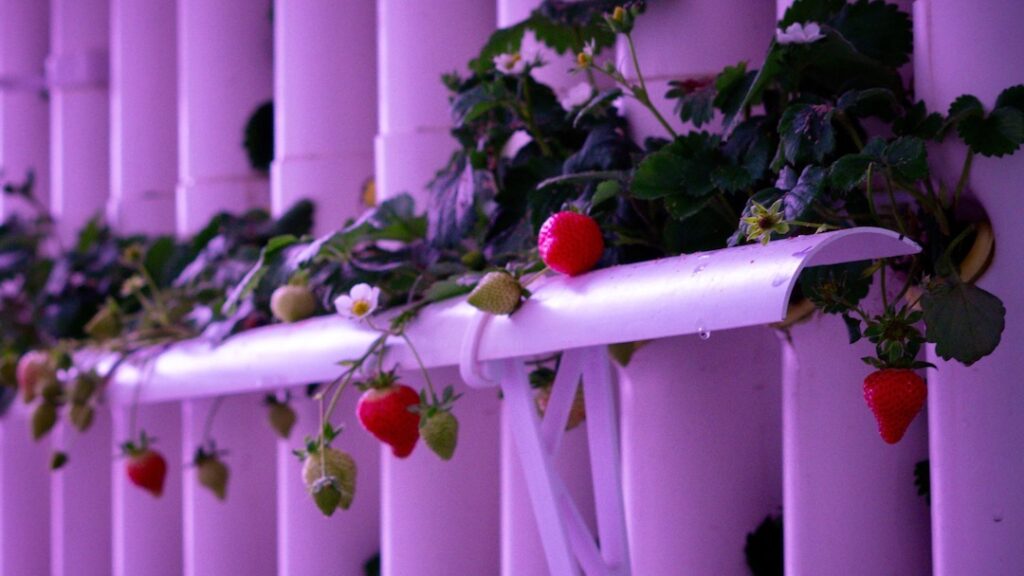
By growing food indoors, vertical farms are completely independent of external conditions and weather. While this does not stop climate change, it does create a unique level of independence that becomes increasingly valuable as extreme weather events become more frequent.
Vertical Farming: What the Modern Agricultural System Can Achieve
In the following sections, we will focus on vertical farming within modern agriculture. Naturally, the question arises as to which areas or types of food are most suited for indoor farming as an efficient and sustainable method.
Plants Suitable for Vertical Farming
Many different types of plants can be grown in vertical farms. Indoor farms are especially well-suited for fast-growing, fresh produce. Due to the high costs of vertical farms, producers also focus on high-value fruits and vegetables that can be densely grown and have a short growth cycle.
Popular crops for indoor farming include:
- Lettuce, herbs, and microgreens,
- Tomatoes,
- Cucumbers,
- Strawberries (Learn more about vGreens’ Vertical Strawberries here), and
- Peas and beans.
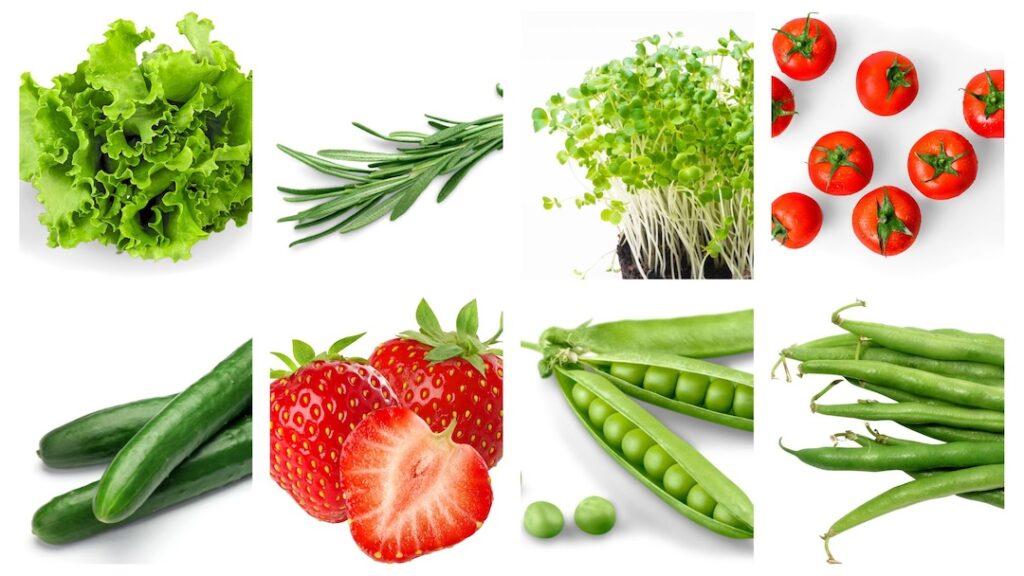
For these crops, the potential of growing in vertical farms is enormous. Water and land use are significantly lower compared to traditional farming, and products can be grown locally, eliminating the need for long transport routes.
Plants Not Suitable for Vertical Farming
However, for various reasons many other crops are not a viable option for vertical farms (yet). Examples include:
- Potatoes – Although potatoes can technically be grown in vertical farms, they can be stored for a long time after harvest. This makes traditional farming more efficient and cost-effective for potatoes than vertical farming, which would not be profitable.
- Wheat – Wheat is currently considered uneconomical for vertical farms, as the height of the plant and its roots take up too much space indoors. Research is ongoing, and if a suitable wheat variety is developed, vertical farms could potentially produce 6,000 times higher yields than open-field farming.
- Avocados – Avocados, a popular fruit often linked with high water consumption and long transport distances, are also unsuitable for vertical farming. Avocado trees require a lot of space, have long growth cycles, and yield relatively low amounts per area. The same applies to crops like mangoes.
Naturally, animal products cannot be produced in vertical farms either. Therefore, indoor farming should not be viewed as the single solution to food scarcity problems. Traditional farming must also be advanced, with a further important focus on reducing animal farming and improving its sustainability.
Challenges of Vertical Farming
It quickly becomes clear that vertical farming is not the solution for all agricultural problems. In addition to the fact that not every fruit or vegetable can currently be grown indoors, vertical farming faces several other challenges. These need to be addressed, just as the problems of traditional agriculture do.
The following are four key challenges:
- One of the central issues with vertical farming is the high energy and electricity consumption, mainly due to the need for artificial lighting and climate control. This leads to higher greenhouse gas emissions compared to farming in greenhouses or open fields, even when relying entirely on renewable energy. For example, a study found that vertically grown vegetables in a Dutch indoor farm produced 16 times more emissions than those grown outdoors.
- The high energy demand also results in the second major challenge: high costs. Especially with rising energy prices, this has become a critical factor in the ongoing development of this method.
- Another big challenge are the hefty capital expenses. Since building fully automated systems often leads to sky-high costs upfront, it is necessary that they are perfectly adapted to the specific requirements of each location – like sunlight exposure or temperature. In other words, we should not look at vertical farming in isolation. Instead, it is important to use a hardware concept that is precisely tailored to local factors, bringing together nature and automated production.
- Finally, a further challenge is that, as mentioned earlier, many key crops – including essential staples like wheat – cannot yet be profitably grown in vertical farms. Unfortunately, this does not just apply to less common products like avocados, but also to fundamental food items that people rely on for their daily diet like wheat.
Conclusion
Traditional agriculture faces profound challenges today, exacerbated by the rapid growth of the global population and the impacts of climate change. These issues urgently require innovative solutions to ensure sustainable and efficient food production. Modern agriculture, therefore, is crucial for addressing these challenges.
In this context, vertical farming offers promising approaches to conserve resources and operate independently of weather-related uncertainties. The ability to produce food under controlled conditions can help tackle some of the most pressing problems of traditional agriculture, such as land use and water scarcity.
However, vertical farming is not without its challenges. High energy costs as well as high capex and limited applicability to certain crops present significant obstacles that still need to be addressed.
It is important to emphasize that vertical farming and other modern methods cannot and should not replace traditional agriculture. Instead, they offer valuable complements to help manage the existing issues in food production. Integrating innovative techniques with proven agricultural practices will be essential to ensuring a sustainable and future-proof food supply for the growing global population.



